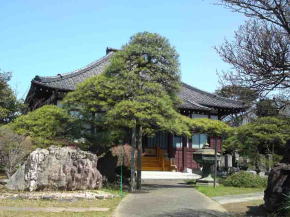The 33 Pilgrimages in Gyoto and Urayasu




The 33 Pilgrimages in Gyotoku and Urayasu was a very popular course of tourism in
Edo period. Visit Ise Jingu Shrine, the 88 pilgrimages in Shikoku and the 33 pilgrimages
in west (around Kyoto) were very far for the people living in
Edo at that time. And also the 33 pilgrimages in Bando (Kanto region) and
Chichibu in
Saitama prefecture needed many days to complete their tours. Then a newly Pilgrimage was
designed in Gyotoku and Urayasu because the area was one of the closest
popular tourist resort for people in Edo. Gyotoku and Urayasu was very
near to Edo and also the 33 temples were in the small area, so it could
give the divine favors to the people who had had complete the pilgrimage
3 times. The pilgrimage begins from the first temple Tokuganji in connection
with the strongest samurai worrier
Musashi Miyamoto, and it ends at the extra temple Fujiwara Kannondo Hall where Musashi
and his son in law Iori first met at, thus it could be said that the pilgrimage
sounds like a journey for sumrai worriers to train their martial arts since
both start and end are deeply related to Musashi Miyamoto.
Moreover, the temples in Gyotoku and Urayasu area are very close to each
other. You could visit them on foot from the stations nearby. It means
that to complete the 33 Pilgrimages in Gyotoku and Urayasu has been the
close and easy for people living in Edo then and Tokyo even now.
Why don't you try to complete the 33 Pilgrimages in Gotoku and Urayasu?
Why don't you visit the 33 Temples on this movie?




